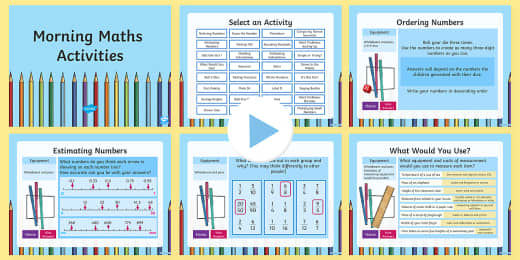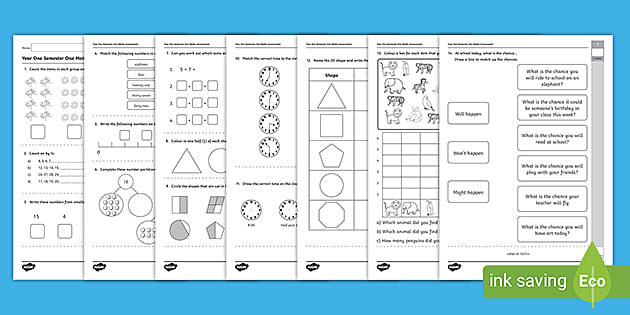- There is - there are worksheets and online activities. Free interactive exercises to practice online or download as pdf to print.
- The single function Manipulate gives immediate access to a huge range of powerful interactive capabilities. For any expression with symbolic parameters, Manipulate automatically creates an interface for manipulating the parameters. Manipulate supports not only mouse and keyboard manipulation, but also gamepads and other devices.
A huge selection of problems and interactive resources for all ability and age ranges. A highlight is the Maths Problem of the week for me, which makes an excellent starter to lessons. They also have the hugely helpful Curriculum Mapping Documents, which provide the entire National Framework, with links to appropriate activities for each. There is - there are worksheets and online activities. Free interactive exercises to practice online or download as pdf to print. The purpose of this interactive worksheet is to assist providers with identifying the appropriate E/M code based upon either the 1995 or 1997 Documentation Guidelines for Evaluation and Management Services or AMA CPT E/M Code and Guideline Changes for 2021 (effective for office/outpatient visits only for dates of service on and after January 1.
PREVIOUS | CONTENTSExpanded Table of Contents
Home
Introduction
Educational Issues for Students with Disabilities
Inclusive Classrooms
Educational Software
Digital Publications
Considering the Ages and Skill Levels of Students
Preserving Pedagogy During Access Adaptation
Benefits of Multimodal Learning
Educational Policies and Standards
U.S. Federal Government Requirements
ADA and Section 504
Section 508
The National Instructional Materials Accessibility Standard (NIMAS)
The National Instructional Materials Accessibility Center (NIMAC)
U.S. State Policies
California Higher Education Requirements
Maryland K-12 Educational Technology Requirements
Access For All: the Accessibility Metadata Standard
Metadata for Accessibility
Primary and Equivalent Resources
Using Accessibility Metadata
Disabilities, Functional Limitations and Accessibility Tips

For People Who Are Blind
For People with Low Vision
For People with Color Blindness
For People Who Are Hard-of-Hearing or Deaf
For People with Physical Disabilities
For People with Language or Cognitive Disabilities
Tools for Access: Types of Assistive Technologies
Screen Readers
Refreshable Braille Displays
Screen Magnifiers
Adaptive Keyboards
Voice-Recognition Software
Single Switches
Equivalent Access Versus Alternative Access
Direct Access Versus Compatible Access
Access Issues for Selected Development Environments
Windows OSResourcesMacintosh OS X
The Java™ platform
Adobe ProductsFlashW3C Recommendations

The Guidelines
Guideline A
Provide access to images for users who are blind or visually impaired.
Interactive Resources F2 Mathematics Olympiad
Checkpoint A1
Provide text equivalents for all images.Technique A1.1Checkpoint A2
Provide meaningful alt for all images.
Technique A1.2
Use the longdesc attribute to provide an in-depth HTML description, where necessary.
Technique A1.3
Write image descriptions.
Allow images and screen layouts to be printed and enlarged.Technique A2.1Checkpoint A3
Provide commands for printing the entire screen or a specific image.
Technique A2.2
Use the standard operating system print API.
Technique A2.3
Allow users to print to a file.
Provide tactile graphics or three-dimensional models for images.Technique A3.1
Provide tactile graphics for images.
Technique A3.2
Provide 3D models for complex images.
Guideline B
Provide access to forms for users who are blind or visually impaired.
Checkpoint B1
Label all form elements and controls so they can be recognized by assistive technology, such as a screen reader.Technique B1.1
Explicitly label all text fields, text areas, drop-down menus, checkboxes and radio buttons.
Technique B1.2
Label all buttons.
Guideline C

Provide access to data in tables for blind users.
Checkpoint C1
Design all HTML data tables in accordance with the Web Content Accessibility Guidelines published by the World Wide Web Consortium's Web Accessibility Initiative (W3C/WAI).Technique C1.1
Use HTML to mark up tables.
Technique C1.2
Provide alternative access to static tables.
Guideline D
Provide access to digital publications.
Checkpoint D1
Provide accessible on-line HTML books.
Checkpoint D2
Provide accessible electronic books (e-books).Digital Rights Management (DRM)Checkpoint D3
Open standards
Technique D2.1
Create accessible PDF e-books
Technique D2.2
Create accessible LIT e-books
Technique D2.3
Create accessible OEBPS e-books
Technique D2.4
Create NIMAS files
Provide textbooks for handheld devices.
Checkpoint D4
Provide textbooks as digital talking books (DTBs).
Checkpoint D5
Provide accessible multimedia in on-line textbooks.
Checkpoint D6
Provide alternative presentations of electronic or on-line textbooks.
Guideline E
Provide access to interactive activities for all users with disabilities.
Checkpoint E1Guideline F
Ensure that all actions can be completed from the keyboard.
Checkpoint E2
Present information in ways that are accessible to both blind and deaf users.
Checkpoint E3
Allow users to customize any timing of events.
Checkpoint E4
Provide features that allow users to access multiple sources of information separately when they are delivered simultaneously.
Checkpoint E5
Provide a simpler version of any screen with complex backgrounds.
Provide access to graphs for users who are blind or visually impaired.
Checkpoint F1Guideline G
Allow all graphs to be printed.
Checkpoint F2
Allow all graphs to be enlarged on screen.
Checkpoint F3
Allow users to control the width of lines and characteristics of fonts for viewing and printing graphs.
Checkpoint F4
Provide a complete description in text for static graphs.
Checkpoint F5
Provide summary information about dynamic graphs.
Checkpoint F6
Provide alternate formats for graphs.Technique F6.1
Provide tactile graphs for static graphs.
Technique F6.2
Provide a brief orientation in text.
Technique F6.3
Provide an audio equivalent to graphs.
Technique F6.3.1
Use tones to present an audio graph.
Technique F6.3.2
Provide text output of a visual graph.
Technique F6.3.3
Implement navigation features to allow users to explore data points while listening to a graph.
Technique F6.4
Provide a haptic or haptic and audible means of obtaining information conveyed in a graph.
Provide access to scientific and mathematical expressions for all users with disabilities.
Checkpoint G1
Allow all expressions to be enlarged on screen.
Checkpoint G2
Ensure that users with visual impairments can read scientific and mathematical expressions and that users with visual impairments and with physical impairments can write expressions.Technique G2.1
Use MathML to provide access to scientific and mathematical expressions
Technique G2.2
Use LaTeX to provide access to scientific and mathematical expressions.
Technique G2.3
Use prerecorded audio to read static scientific and mathematical expressions
Technique G2.4
Use concatenated speech strings for simple scientific and mathematical expressions.
Technique G2.5
Create scientific and mathematical expressions scripts using guidelines for spoken mathematics.
Guideline H
Provide access to multimedia presentations for users with sensory disabilities.
Creating Accessible MultimediaSMILCheckpoint H1
SAMI
Flash
Add audio descriptions to multimedia presentations.Technique H1.1Checkpoint H2
Add audio descriptions to movies using MAGpie.
Technique H1.2
Integrate audio descriptions into multimedia presentations using SMIL.SMILTechnique H1.3SMIL 2.x and audio descriptions
SMIL 1.0 and extended audio descriptions
Embed audio-description tracks in QuickTime movies.
Technique H1.4
Add audio descriptions to Windows Media.
Add closed captions to multimedia presentations.Technique H2.1
Write captions for multimedia presentations using MAGpie.
Technique H2.2
Embed captions in QuickTime movies
Technique H2.3
Add audio-description and caption controls to QuickTime multimedia presentations.
Technique H2.4
Integrate captions into multimedia presentations using SMIL.
Technique H2.4.1
Integrate transparent- or translucent-background captions using SMIL in RealPlayer.
Technique H2.4.2
Integrate transparent- or translucent-background captions into multimedia presentations for the QuickTime Player.Embedded transparent-background caption tracks in QuickTimeTechnique H2.5
Transparent-background caption tracks with SMIL in QuickTime
Embedded translucent-background caption tracks in QuickTime
Translucent-background caption tracks with SMIL in QuickTime
Integrate captions into multimedia presentations using SAMI.
Guideline I
Provide accessible multimedia in e-books.
Interactive Resources F2 Mathematics Igcse
Checkpoint I.1
Integrate accessible multimedia into PDF e-booksTechnique I1.1Checkpoint I.2
Embed multimedia into PDF e-books.
Technique I1.2
Link to multimedia from a PDF e-book
Technique I1.3
Link to embedded multimedia in a PDF e-book
Technique I1.4
Make multimedia in a PDF e-book locatable
Integrate accessible multimedia into OEBPS-format e-booksTechnique I2.1Checkpoint I.3
Link to multimedia from OEBPS e-booksIntegrate accessible multimedia into handheld e-books
Technique I3.1
Integrate multimedia into Palm e-books
Technique I3.2
Integrate multimedia into Windows Pocket PC e-books
Guideline J
Provide accessible multimedia in Digital Talking Books (DTBs).
Checkpoint J1
Add in-line multimedia to DTBsTechnique J1.1
Integrate in-line multimedia in DTBs
Technique J1.2
Integrate linked multimedia into DTBs
Technique J1.3
Integrate embedded, accessible multimedia into DTBs
Technique J1.3.1
Embed accessible QuickTime multimedia into DTBs
Technique J1.3.2
Embed accessible Real media into DTBs
Technique J1.3.3
Embed accessible Windows Media multimedia into DTBs
Appendices
Appendix 1:Braille and Tactile Graphics Production ResourcesAppendix 2:Closed Captioning and Audio Description ResourcesAppendix 3:General Captioning ConventionsAppendix 4:
General Conventions
Math notation
Timing conventionsGuides to Spoken MathematicsAppendix 5:General Audio Description Guidelines
Acknowledgements
PREVIOUS | CONTENTS
Essentials for Teachers
General Resources
Resources by Subject
Tools for Higher Ed
Resources and Partners
Resources and services for Utah Higher Education faculty and students such as Canvas and collegEmedia.Credential Resources
Career Resources
Additional Resources
Content and resources for career literacy and preparation.×- Professional Development
Take a Class
Additional Resources
Tech Discussions
EDU Partners
Meet Our Instructors
Follow Us
Watch UEN-TV
Information
Art & STEM Focus
UEN-TV is operated by the Utah Education Network. Our goal is to educate, engage, and enrich the lives of Utah residents through broadcast programs and services.On-Demand Support
800-863-3496, opt. Download inciting incident. 1, opt. 1
Mon-Fri 6:00 AM-10:00 PM
Or e-mail us: ivc-ops@uen.orgResources
Additional Info
The Utah Education Network (UEN) uses various systems and tools to deliver distance education classes to Utah students.Tech Services
Operations Center
801-585-7440
Staff DirectoryThe Activation item can be found in the AVS4YOU section. After that the following window will appear: Direct the mouse cursor to the line, where the license key must be placed, and paste it via right-click menu that you used to copy the key. After that click the OK button to finish the activation process. How to crack avs4you activation codes. Avs4you Activation Code Serial Key t.co/fGRV0Igbp0. 748a ( keygen crack) DOwnload VideoReDo TVSuite Version 5. 264/ AVC files fast with. 795a Beta + Crack Serial Video editing is a complicated task, with motion pictures requiring.
UEN Security Office
801-585-9888Technical Services Support Center (TSSC)
800-863-3496
Staff DirectoryProjects
Network Groups
Network Tools
Information
Chemical engineering all engineering ebooks for free students. Eccles Broadcast Center
101 Wasatch Drive
Salt Lake City, UT 84112(800) 866-5852
(801) 585-6105 (fax)UEN Governance
Contact Us
Administration
(801) 585-6013
Org ChartInstructional Services
(800) 866-5852
Org ChartPublic Information
(801) 585-7271
Logo and GuidelinesTechnical Services
(800) 863-3496
Org Chart
